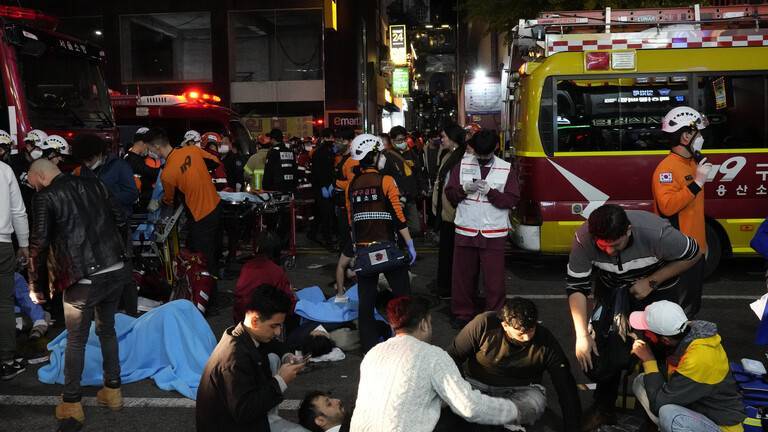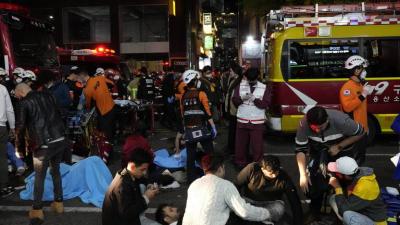Local Korean authorities and eyewitnesses revealed the main cause of the deadliest stampede in South Korea's history, according to the Yonhap News Agency. Yonhap reported, based on statements from authorities and witnesses on Sunday, that the sudden surge of Halloween revelers into a narrow alley measuring 4 meters wide in the "Itaewon" area of Seoul led to hundreds of people becoming trapped, preventing them from moving or escaping. This resulted in some individuals falling and causing others to fall as well, culminating in the deadliest stampede in South Korea's history.
It was noted that at least 151 people lost their lives, and 82 others were injured in the incident that occurred on Saturday night in the famous Halloween party street of Itaewon. The alley where the incident took place is only 4 meters wide and is a 40-meter long sloping passage that connects a bustling restaurant area to the main street, barely wide enough for about six adults to pass simultaneously.
The massive crowds of revelers gathered in the narrow alley on Saturday night to celebrate the first Halloween season without masks since the COVID-19 pandemic began in early 2020, after the lifting of mask mandates in outdoor spaces last September. According to Yonhap, the Itaewon area is home to gatherings of expatriates and foreigners in central Seoul, known for its vibrant nightlife and stylish restaurants, making it the most popular spot for Halloween celebrations, with tens of thousands visiting the area that night.
An eyewitness who survived the incident stated that the stampede "started immediately" after some individuals fell, causing a domino effect that led to a pile-up, leaving many unable to move or breathe. The large number of people complicated rescue efforts for the emergency responders and police, who struggled to cover the 100 meters to the scene and reach the victims, contributing to the high death toll. Witnesses explained that the sudden increase of around 300 individuals requiring CPR and other first aid made the task for rescuers and paramedics extremely challenging, while traffic congestion during the return home further exacerbated the situation.




